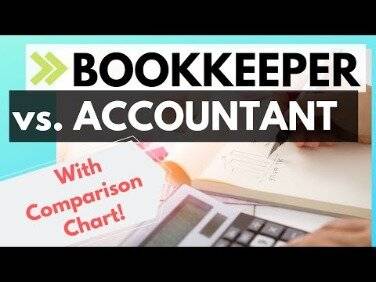The long-term debt number on the balance sheet is an aggregate number, which pools all the debt issued by the company. The details of the figure are found in the notes section, which breaks down the debt by issuance. The note provides important details like maturity, interest rate, and other terms of debt.

In general, both internal and external stakeholders use the same corporate finance methodologies for maintaining business activities and evaluating overall financial performance. Basic analysis of the income statement usually involves the calculation of gross profit margin, operating profit margin, and net profit margin, which each divide profit by revenue. Profit margin helps to show where company costs are low or high at different points of the operations. business advisor job description In some cases, you may need to undertake a fairly detailed financial analysis because you are looking for additional capital in the form of loans or investors. The lack of any appreciable standardization of financial reporting terminology complicates the understanding of many financial statement account entries. There’s little hope that things will change on this issue in the foreseeable future, but a good financial dictionary can help considerably.
What is the approximate value of your cash savings and other investments?
The main difference between the two methods is that GAAP is more “rules-based,” while IFRS is more “principles-based.” Both have different ways of reporting asset values, depreciation, and inventory, to name a few. The presentation of a company’s financial position, as portrayed in its financial statements, is influenced by management’s estimates and judgments. In the best of circumstances, management is scrupulously honest and candid, while the outside auditors are demanding, strict, and uncompromising. Whatever the case, the imprecision that can be inherently found in the accounting process means that the prudent investor should take an inquiring and skeptical approach toward financial statement analysis. Financial ratios help you make sense of the numbers presented in financial statements, and are powerful tools for determining the overall financial health of your company.

Financial statements provide investors with information about a company’s financial position, helping to ensure corporate transparency and accountability. Understanding how to interpret key financial reports, such as a balance sheet and cash flow statement, helps investors assess a company’s financial health before making an investment. Investors can also use information disclosed in the financial statements to calculate ratios for making comparisons against previous periods and competitors. Understanding the basics of financial statements provides investors with valuable information about a company’s financial health. Investors can use key reports, such as a balance sheet, cash flow statement, and income statement, to evaluate a company’s performance, helping to make more informed investment decisions. Financial statements play a vital role in maintaining the integrity of the financial system and promoting trust between companies and investors.
The income statement generally starts with the revenue earned for the period minus the cost of production for goods sold to determine the gross profit. It then subtracts all other expenses, including staff salaries, rent, electricity, and non-cash expenses, such as depreciation, to determine the earnings before interest and tax (EBIT). Finally, it deducts money paid for interest and tax to determine the net profit that remains for owners. The income statement shows a company’s financial position and performance over a period by looking at revenue, expenses, and profits earned. It can be created for any period using a trial balance of transactions from any two points in time. Financial position is the current balances of the recorded assets, liabilities, and equity of an organization.
How Do I Better Understand The Financial Position Of My Company?
Each of these three sections tells us a unique and important part of the company’s sources and uses of cash over a specific time period. Wolters Kluwer is a global provider of professional information, software solutions, and services for clinicians, nurses, accountants, lawyers, and tax, finance, audit, risk, compliance, and regulatory sectors. Browse our list of top accounting firms and learn more about their services in our hiring guide.
- Second, vertical analysis compares items on a financial statement in relation to each other.
- Regardless of the size of a company or industry in which it operates, there are many benefits of reading, analyzing, and understanding its balance sheet.
- Furthermore, the interest rate on the debt is 5.45%, which is higher than the 4.56% rate in the previous year.
- Upgrading to a paid membership gives you access to our extensive collection of plug-and-play Templates designed to power your performance—as well as CFI’s full course catalog and accredited Certification Programs.
Current assets or current liabilities are those with an expected life of fewer than 12 months. If you borrow money from a bank, you have to list the value of all of your significant assets, as well as all of your significant liabilities. Your bank uses this information to assess the strength of your financial position; it looks at the quality of the assets, such as your car and your house, and places a conservative valuation upon them.
What are the advantages of financial statement analysis?
While accountants and finance specialists are trained to read and understand these documents, many business professionals are not. An ability to understand the financial health of a company is one of the most vital skills for aspiring investors, entrepreneurs, and managers to develop. Armed with this knowledge, investors can better identify promising opportunities while avoiding undue risk, and professionals of all levels can make more strategic business decisions. Just like the accounting equation, the assets must always equal the sum of the liabilities and owner’s equity. This makes sense when you think about it because the company has only three ways of acquiring new assets. Long-term liabilities are debts and other non-debt financial obligations, which are due after a period of at least one year from the date of the balance sheet.
- If you aren’t sure which course is the right fit, download our free course flowchart to determine which best aligns with your goals.
- Review the key financial statements within the context of the relevant accounting standards.
- Each financial statement is also analyzed with vertical analysis to understand how different categories of the statement are influencing results.
- This information is recorded in the balance sheet, which is one of the financial statements.
It shows its assets, liabilities, and owners’ equity (essentially, what it owes, owns, and the amount invested by shareholders). Current liabilities are the company’s liabilities that will come due, or must be paid, within one year. This includes both shorter-term borrowings, such as accounts payables (AP), which are the bills and obligations that a company owes over the next 12 months (e.g., payment for purchases made on credit to vendors). Accounts receivables (AR) consist of the short-term obligations owed to the company by its clients.
Consolidated Statements
The Bank has said it is watching closely for signs of inflation persistence from pay growth and prices in the services sector. For example, if an outlet expects their reported capacities to be sold next year, the level of inventory will fall while the amounts of cash will rise. If the inventory value of an outlet goes down by 10%, but sales saw an increase of 15%, this is a sign that they are managing their inventory relatively well. It can be sold at a later date to raise cash or reserved to repel a hostile takeover. Some liabilities are considered off the balance sheet, meaning they do not appear on the balance sheet.
For example, a high equity ratio (the ratio of equity to total assets) suggests that a company is in good financial shape. Some elementary accounting concepts have been touched upon in this short balance sheet discussion. At each stage, there is an emphasis on total assets equaling total liabilities (including the capital). GAAP sets accounting guidelines and standards that companies must follow when preparing financial statements, whereas IFRS takes a more principles-based approach. Both conventions differ in how they report asset values, depreciation, and inventory.
What is the Statement of Financial Position?
Knowing how to work with the numbers in a company’s financial statements is an essential skill for stock investors. The meaningful interpretation and analysis of balance sheets, income statements, and cash flow statements to discern a company’s investment qualities is the basis for smart investment choices. Alone, the balance sheet doesn’t provide information on trends, which is why you need to examine other financial statements, including income and cash flow statements, to fully comprehend a company’s financial position. A balance sheet, along with the income and cash flow statement, is an important tool for investors to gain insight into a company and its operations. It is a snapshot at a single point in time of the company’s accounts—covering its assets, liabilities, and shareholders’ equity. The purpose of a balance sheet is to give interested parties an idea of the company’s financial position, in addition to displaying what the company owns and owes.
When you recognize your employer is struggling, you can take steps to either demonstrate your worth or seek employment elsewhere. Receivables form an important part of WEF’s balance sheet, as they represent sources of cash flow. Though the balance sheet does not include an exclusive note for receivables, the note regarding financial instruments gives a breakdown of receivables by age. Based on the note, only about 3.5% of receivables in 2019 were late, which indicates the high quality of receivables. By comparing the company’s market value to its book value, investors can, in part, determine whether a stock is under- or over-priced. The market-to-book multiple, while it does have shortcomings, remains a crucial tool for value investors.